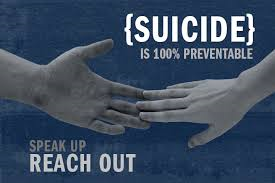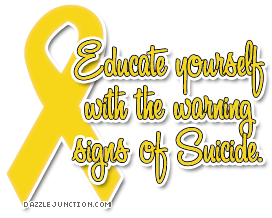

Almost any intervention can help someone who is suicidal, but people have to know what to watch out for.
The Suicide Prevention Resource Center finds there are ways to ease the risk of suicide, including basics such as taking someone to see a professional and restricting access to any highly lethal means of suicide.
The SPRC was founded in 2002 as part of the U.S. Department of Health’s National Strategy for Suicide Prevention. The Utah Suicide Prevention Plan for 2013 published its website Aug. 1 to provide resources for suicide prevention and support for individuals, families and communities impacted by suicide.
People who know how to solve problems and conflicts in a nonviolent way are at less of a risk of suicide than are those who have religious beliefs that discourage suicide.
The SPRC finds people who are at risk for suicide are the mentally ill; alcoholics and other substance abusers; anyone with a history of trauma or abuse; someone who has just lost a job, money or a relationship; and someone who is aggressive or impulsive.
The risk also goes up when the suicidal person knows someone who has committed suicide, even if that other person is only known through the internet or a respected media figure—an actor, athlete or rock star. More likely, friends and family who have committed suicide may push someone contemplating suicide over the edge.
However, about 20 percent of the people who commit suicide give no warning to family or friends, the report said.
Although suicide prevention focuses on teens, the U.S. Centers for Disease Control in Atlanta found older adults have the highest suicide rates. Elderly people fall high risk groups when they experience dementia or other memory problems, lose a spouse of many years or are diagnosed with a chronic illness.
Whether someone is young or older, the signs of suicide are similar and should be taken seriously. In either case, the suicidal person gives away possessions and may have more energy. The suicidal person may abandon old friends and begin talking about death and dying.
Data from the Utah Department of Health show an average of 402 Utahans died from suicide annually between 2006 and 2010, but state data shows those averages jumped to 490 in 2011.
Suicide is the second leading cause of death among youth ages 10 to 17 and among young adults ages 18 to 24. Utah’s suicide rate has been consistently higher than the U.S. rate for the last decade.
Everyone in any family should know what they should do in case someone is threatening suicide: Share the information.
National Hopeline Network – 1-800-SUICIDE
Suicide Prevention Liveline – 1-800-TALK
YAH - 877-968-8454
The Trevor Project for youth with questions about same-sex attraction or gender identity issues - 1-866-488-7386
Vet 2 Vet is a 24-hour crisis line for veterans – 877-838-2838.
The Veterans Crisis Line - 1-800-873-8255, then press 1.
Someone who has trouble hearing may call 1-800-799-4889 (1-800-799-4889).
Women suffering from postpartum depression may call 1-800-773-6667.
The state Department of Health offers a geographic breakdown of suicide in Utah’s counties. Grand - 1, Rich - 2, Sanpete - 3, Emery - 4, Carbon - 5, Sevier - 6, Wayne - 7, Uintah - 8, Millard - 9, Weber - 10, Iron - 11, Kane - 12, Beaver - 13, Duchesne - 14, Box Elder - 15, San Juan -16, Salt Lake - 17, Washington - 18, Davis - 19, Juab - 20, Utah - 21, Wasatch - 22, Tooele - 23, Summit -24, Morgan - 25, Cache - 26, Garfield - 27.
The Center for Disease Control in Atlanta’s U.S. Suicide Rates by state for 2005 – the most recent year available - show Utah ranks 15th in the nation, after Montana, Nevada, Alaska, New Mexico, Wyoming, Colorado, Idaho, Arizona, South Dakota, Oregon, Oklahoma and Tennessee.
Internationally, the World Health Organization reports United States ranks 33rd in the world for suicide rates, just above Romania. Greenland led the way in 2010 with a suicide rate 132 % higher than South Korea, which ranks second, followed by Lithuania, Guyana, Kazakhstan, Belarus, China, Slovenia, Hungary, Japan, Sri Lanka, Ukraine, Russia, Croatia, Latvia, Moldova Serbia, Belgium, Finland, Bhutan, Uruguay, South Africa, Poland, Taiwan, Estonia, France, Surinam, Bosnia and Hertzegovina, Austria, Czech Republic, Cuba and Bulgaria.
Anyone reading these suicide statistics should be reminded these numbers may not reflect reality because the figures are for those identified by the governments and police investigators as suicides, and possibly not real suicides.